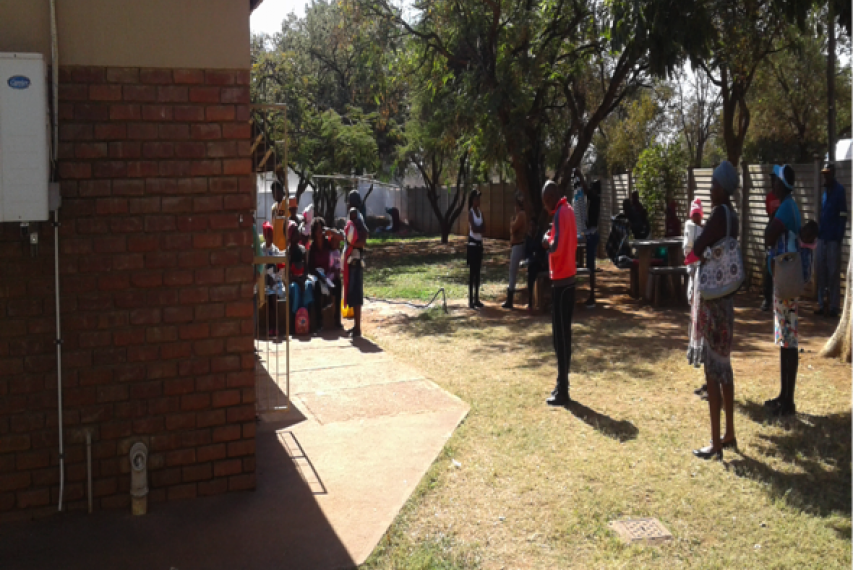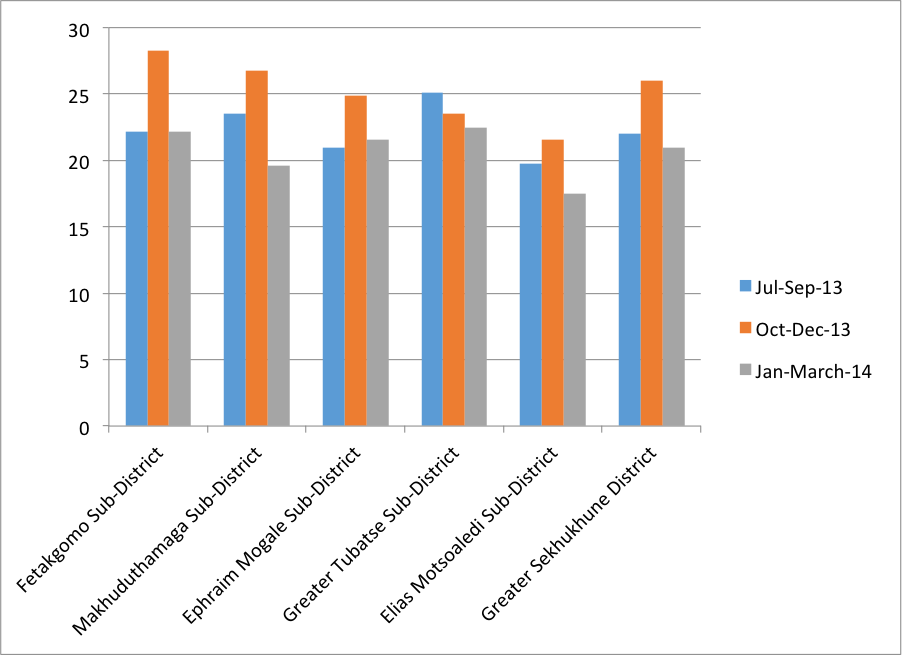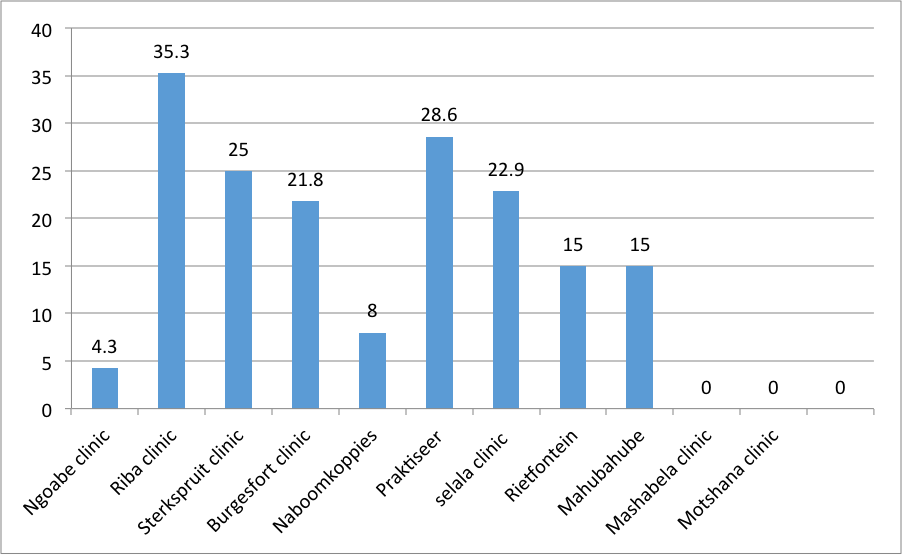
Project Significance
The intervention strategies developed in the study may help HIV-positive patients re-engage and remain in care. The study can be most beneficial with HIV education, skills building, and outreach programme strategies, this will in turn increase knowledge needed to better attract and retain HIV-positive patients in care within respective clinics in all the sub-districts. The study could also be beneficial to the Greater Sekhukhune District as the intervention strategies developed in the study may help decrease the LTFU rate, AIDS related deaths and increase the rate of patients retained in care within the respective district.
Findings
I am the finalising my data collection now, however, thus far barriers that contribute to patients defaulting in HIV care from the patients and nurse perspective involve, feeling better physically, traditional believes, religious beliefs, denial, lack of confidentiality by clinic staff and home based care workers. More data may still come up during the interviews that I an still to conduct. Below are the pictures of some of the areas where I travelled during my data collection.
Project History
Despite the South African government`s efforts to expand access to antiretroviral therapy services, from urban centres to resource-constrained rural communities, with the vision of zero new infections, and zero HIV- related deaths, there were 171, 733 HIV- related deaths in 2014 (Statistics South Africa, 2015). Moreover, loss to follow-up care among HIV-positive people who are on antiretroviral treatment continues to be a significant problem. Furthermore, it is expected that the longer patients take antiretroviral medicines, the longer they will adhere to ART, be retained in care, and achieve high viral load suppression, which will lead to improved health, and reduced mortality rate. In the Sekhukhune District of South Africa, some sub-districts contain residents who live further than five kilometres from their nearest clinic, which inhibits patients` access to clinical therapy. For instance, Elias Motsoaledi Sub-District enjoys the greatest access, as 64% of the population can reach a clinic within a five kilometre radius. In Greater-Tubatse Sub-District, 45% of residents have close access to clinics. Makhuduthamaga Sub-District stands at 48%, Ephraim Mogale Sub-District at 47%, and Fetakgomo Sub-District at 51%. Sub-Districts where clinic access is further from residents’ homes may pose challenges to patients’ access to ART and may lead to patients` LTFU in HIV care (Sekhukhune Annual District Report, 2014).
The rate of LTFU in the Sekhukhune district in Limpopo Province is 23%, which is greater than the South African National LTFU rate of 20% in the financial year 2013/2014 (Sekhukhune District Annual Report, 2014) . Therefore, this project focused on this district.
Figure 3 and Figure 4 illustrate loss to follow-up in the Sekhukhune District of Limpopo Province in South Africa. Figure 3 illustrates prevalence among HIV-positive patients on ART within five sub-districts of the Sekhukhune District LTFU. It illustrates the prevalence of LTFU for three annual quarters 2013-2014, beginning in 7/1/2013, 10/1/2013 and 1/1/2014). It is noteworthy that for the quarter beginning 1/7/2013, the districts` LTFU rates were 22.3%, October 2013 saw the highest rate (25%) and for the quarter beginning 1/1/2014, the rate was (21%). There has thus been a 4% decrease of LTFU rates in the Greater Sekhukhune District. This slight decrease is not successful enough, however, considering South Africa`s health system vision, which is to retain all HIV-positive patients on ART in care.

Figure 4. Sekhukhune Inter- Sub-District Loss to Follow-Up at 3 months
(Sekhukhune District Annual Report, 2014)
Figure 4 illustrates clinic specific LTFU in the Sekhukhune District of Limpopo Province. It is important to note that the clinics presented in the graph are only some of the 124 health facilities (including 117 clinics and 7 hospitals) in the Sekhukhune District. However, in this figure it is evident that patients are increasingly lost to follow- up in care. In some clinics, such as Ngoabe Clinic and Riba Clinic, LTFU prevalence is higher, compared to other clinics. In contrast, there are clinics with no LTFU of patients at all.
Several awareness campaigns have been conducted to help people realize the importance of adhering to antiretroviral treatment and retention in care. Despite these campaigns, many patients have become lost to follow-up, putting their health and that of their communities at risk. It is worth noting that the higher the rate of LTFU, the higher the prevalence of HIV- related deaths. Furthermore, given the significant negative impact that default from treatment has on HIV- positive people and their families, the need to conduct this study was essential.
The results of this study will provide a better understanding of factors contributing to LTFU of HIV- positive people on ART, especially in the clinics with higher prevalence of neglected care. Information from patients’ and nurses’ perspectives, combined with theories of health behaviour, informed the development of intervention strategies to help HIV positive people to re-engage and remain in care.

Figure 5. Clinic LTFU at 3 Months (Q1) January to March 2014 in Sekhukhune District, (Sekhukhune District Annual Report, 2014)
Location
Sekhukhune District of the Limpopo province, South Africa
